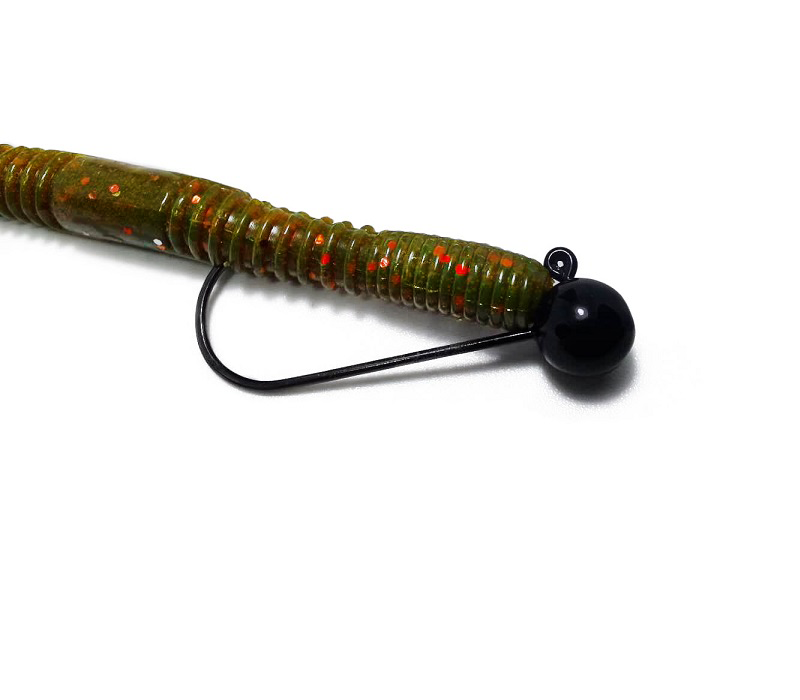Night fishing for bass offers a thrilling blend of solitude, strategy, and explosive action. As the sun sets, lakes transform into prime feeding grounds where trophy-sized bass prowl the shallows. However, success after dark demands specialized knowledge, gear adjustments, and safety awareness. This guide compiles essential tips to help you navigate the challenges of nighttime bass fishing while maximizing your catch rates—all while emphasizing natural integration of critical gear like fishing hooks for reliability and safety.

Prioritize Dark, Vibrant Lures for Visibility
Bass rely heavily on their lateral lines and vibrations to locate prey in low-light conditions. While color perception fades at night, dark lures like black, junebug, or deep purple create a stark silhouette against the moonlit surface, making them easier for bass to detect. Opt for larger profiles, such as 10-inch worms or 3/4-ounce spinnerbaits, which displace more water and generate stronger vibrations.
Avoid lures with treble hooks, as they increase the risk of snagging or accidental injury during erratic hooksets. Instead, single-hook baits like jigs or Texas-rigged worms reduce tangles and simplify landing fish, especially when paired with sharp, corrosion-resistant fish hooks designed for durability in freshwater environments.
Optimize Gear for Sensitivity and Safety
Night fishing demands gear that compensates for limited visibility. Use medium-heavy rods with braided line (20–30 lb) for better bite detection, and pair them with fluorocarbon leaders (15–20 lb) to add stealth near clear structures. Headlamps with red or green filters preserve night vision, while UV lights illuminate fluorescent lines for tracking subtle strikes. Avoid bright white lights, which can spook fish.
Safety is paramount: always wear a life jacket and keep a first-aid kit, emergency blanket, and bolt cutters (for hook removal) within reach. A clutter-free boat deck minimizes tripping hazards, and a portable GPS unit ensures you can navigate back to shore safely.
Target High-Probability Zones
Bass often migrate to shallow areas at night, particularly near structures like weed edges, docks with lights, or submerged timber. These zones concentrate baitfish and offer ambush points for feeding bass. Focus on depths of 0–10 feet, especially around transitions between deep and shallow water. Slow-roll a spinnerbait along a weed line or hop a jig near rocky outcrops to mimic crawfish movements.
During spring, target spawning flats where bass guard beds. A Texas-rigged worm dragged slowly through these areas can trigger defensive strikes from territorial fish. Pay attention to subtle line movements, as bass often strike with less aggression in the dark.
Master Slow, Stealthy Techniques
Patience is critical after dark. Bass often track prey methodically, so slow your retrieve to give them time to strike. For topwater lures like stickbaits, use a walk-the-dog action with intermittent pauses to mimic injured prey. With jigs and worms, let the bait sit longer on the bottom and rely on subtle twitches to provoke reaction bites.
Buzzbaits are another effective option—reel just fast enough to keep the blade gurgling, targeting shallow banks or lighted docks where bass hunt. Sensitivity is key; trust line tension over visual cues, and keep your rod tip low to detect even the slightest nibble.

Adapt to Seasonal and Environmental Factors
Moon phases significantly influence bass activity. During full or new moons, increased light or tidal movements stimulate feeding, making these periods ideal for night fishing. Adjust lure sizes and retrieve speeds based on visibility—larger baits work well under bright moonlight, while compact profiles excel on darker nights.
Weather stability also plays a role. Warm, calm nights are optimal, but post-frontal conditions can slow activity. In summer, focus on post-spawn bass near deep drop-offs, and use noise discipline to avoid spooking fish. Electric trolling motors on low settings help maintain stealth, while minimizing boat movement preserves the tranquility of your fishing spot.

Practice Conservation and Ethical Angling
Respect local regulations, including size limits and seasonal closures, to sustain bass populations. Use barbless fishing hooks or circle hooks for easier catch-and-release, and handle fish gently to reduce stress. Wet your hands before touching bass to protect their slime coat, and avoid overcrowded areas near marinas to minimize disturbance.
Properly disposing of used fishing line and hooks prevents environmental harm. Carry a small container for trash, and consider using biodegradable bait options to further reduce your ecological footprint.
Conclusion: Embrace the Night’s Potential
Night fishing for bass rewards those who blend preparation with adaptability. By selecting the right lures, refining your techniques, and prioritizing safety, you’ll unlock opportunities to land trophy fish under the stars. Equip yourself with quality gear—including sharp, reliable Fish hooks—and stay patient as you learn the rhythms of bass behavior in the dark.
Whether you’re flipping jigs into shadowy cover or working a topwater lure across moonlit flats, the thrill of a bass erupting from the darkness is an experience every angler should chase. Stay vigilant, respect the environment, and let the hunt begin!